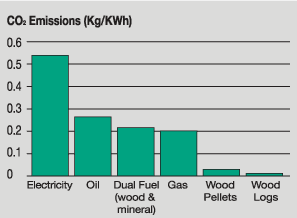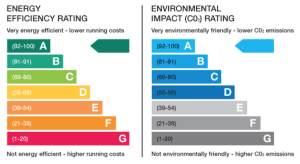Not only does a wood burning stove look great in your home, burning wood is also a highly environmentally friendly way to keep warm. There is still some confusion around the use of wood as a heating source. Some people believe that if we cut down trees for firewood there will eventually be no wood left. This is simply not true!
Woodlands & Forestry Management:
Almost all firewood comes from thinning operations during forestry management, if demand for wood fuel is low, then many areas of woodland can often be neglected and not managed correctly.
However, increased demand for wood fuel will increase the amount of proper thinning and management that is done. Correctly managed woodlands will increase its bulk and grow better than non-managed woodlands.
It is easy to forget that trees are constantly growing; they are not a static resource, a hardwood forest might accumulate up to 7 cubic metres (about 7 tonnes green) of new wood per hectare each year, and softwood much more. When fully seasoned this is approximately 5 tonnes of useful fire wood per hectare per annum. There are 3.1 million hectares of woodland in the UK, which has been increasing in recent years.
 A Closed Loop CO2 Cycle:
A Closed Loop CO2 Cycle:
CO2 is taken out of the atmosphere by the growth of trees, at the same rate CO2 is created by the burning of wood. This is effectually a closed CO2 cycle. The CO2 impact from burning wood is offset with the growth of new trees.
The CO2 emissions given off by burning wood is tiny in comparison to other heating sources, as you can see on the diagram to the left.
.
.
 What is SAP?
What is SAP?
SAP is Standard Assessment Procedure, and is used to calculate overall efficiency and the carbon output of a house. SAP was established by the Building Research Establishment for the former Department for the Environment in 1992.
It was designed as a tool to help deliver the governments energy efficiency policies and is based on the BRE Domestic Energy Model (BREDEM), which provides a framework for calculating the energy consumption of homes. BREDEM is the name given to a group of energy calculation procedures for dwellings. As a wood burning stove is virtually carbon neutral, they can improve the SAP rating of a home. As we move towards carbon neutral homes, the requirement for heating from a carbon neutral source, such as a wood burning stove is becoming much more relevant.
How We Currently Burn Wood
.
- Logs account for over 90% of wood usage
- The second largest type of wood used in the UK is waste wood, at around 20%
- Most people who burn wood are either given the wood, or buy it from a specialist, both groups combined account for around 40% of total wood acquisition in the UK
- Only slightly over 10% of wood users acquire wood from their own land
- Only around 1.3% use wood as a cooking heat source
- Almost 90% of people have their wood fuel heating source in the reception/living room
Wood as a Primary Heating Source?
Many people think wood and specifically a wood burning stove can only be used as a secondary source of heating. However, a wood burning stove can be used as a primary heating source in a home – as a power source for a homes central heating. Currently domestic heating accounts for around 20% of the UK’s carbon emissions, and so you can make a significant reduction to your carbon footprint by switching to wood burning as your primary heating in your home.








